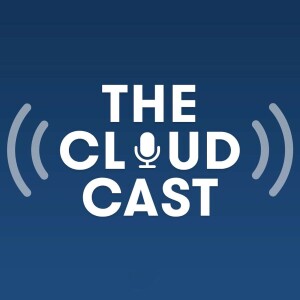
Shadow IT and start-ups were the original users of public cloud, over a decade ago. But as public cloud has become a multi-billion dollar business, let’s explore how the role of Shadow IT has evolved.
SHOW: 591
CLOUD NEWS OF THE WEEK - http://bit.ly/cloudcast-cnotw
CHECK OUT OUR NEW PODCAST - "CLOUDCAST BASICS"
SHOW SPONSORS:
- Datadog Kubernetes Solution: Maximum Visibility into Container Environments
- Start monitoring the health and performance of your container environment with a free 14 day Datadog trial. Listeners of The Cloudcast will also receive a free Datadog T-shirt.
- Teleport is the easiest, most secure way to access all your infrastructure
- Get started with Teleport
- CloudZero - Cloud Cost Intelligence for Engineering Teams
SHOW NOTES:
- Shadow IT
- Why Software is Eating the World (WSJ, 2011)
- “Does IT Matter” (Nicholas Carr, 2014)
- Bi-Modal IT (Gartner, 2015)
DOES SHADOW IT STILL EXIST IF PUBLIC CLOUD IS MAINSTREAM?
Shadow IT began as a way to be more productive in the office (server under the desk, WiFi in a conference room, etc.) and then it went to the cloud (SaaS, the IaaS/PaaS). But how did it evolve and what situations has it created now?
WHAT DOES THE NEW DISTRIBUTED IT LOOK LIKE NOW?
- Everybody has the ability to get access to (almost) any technology, via open-source or public cloud, or freemium services.
- Everybody has the ability to learn something new (YouTube, ACloudGuru, Developer Evangelists, etc.
- IT organizations have less influence over company-wide architectures and strategies.
- IT still is often tasked with maintaining applications/security/compliance, even after another group deployed it.
- IT leaders are asked to lead digital transformation projects, and typically aren’t staying in the same place for more than 2-3 years. How much of that time is spent coordinating, communicating, re-organizing around DevOps, DevSecOps, FinOps, AIOps, etc..
- There are hybrid applications, but they aren’t hybrid in the sense of consistently being deployed everywhere to manage vendor lock-in.
- There are many multi-cloud companies because IT no longer has a boundary. And the economics of cloud means that most applications won’t move once deployed (easier to turn off than to move).
- There are many, many pains-of-glass.
FEEDBACK?
- Email: show at the cloudcast dot net
- Twitter: @thecloudcastnet
More Episodes
 2023-09-03
2023-09-03
 2023-08-30
2023-08-30
 2023-08-27
2023-08-27
 2023-08-23
2023-08-23
 2023-08-20
2023-08-20
 2023-08-13
2023-08-13
 2023-08-09
2023-08-09
 2023-08-06
2023-08-06
 2023-08-02
2023-08-02
 2023-07-30
2023-07-30
 2023-07-26
2023-07-26
 2023-07-23
2023-07-23
 2023-07-16
2023-07-16
 2023-07-12
2023-07-12
 2023-07-09
2023-07-09
 2023-07-05
2023-07-05
 2023-07-02
2023-07-02
 2023-06-28
2023-06-28
Create your
podcast in
minutes
- Full-featured podcast site
- Unlimited storage and bandwidth
- Comprehensive podcast stats
- Distribute to Apple Podcasts, Spotify, and more
- Make money with your podcast
It is Free
- Privacy Policy
- Cookie Policy
- Terms of Use
- Consent Preferences
- Copyright © 2015-2024 Podbean.com





